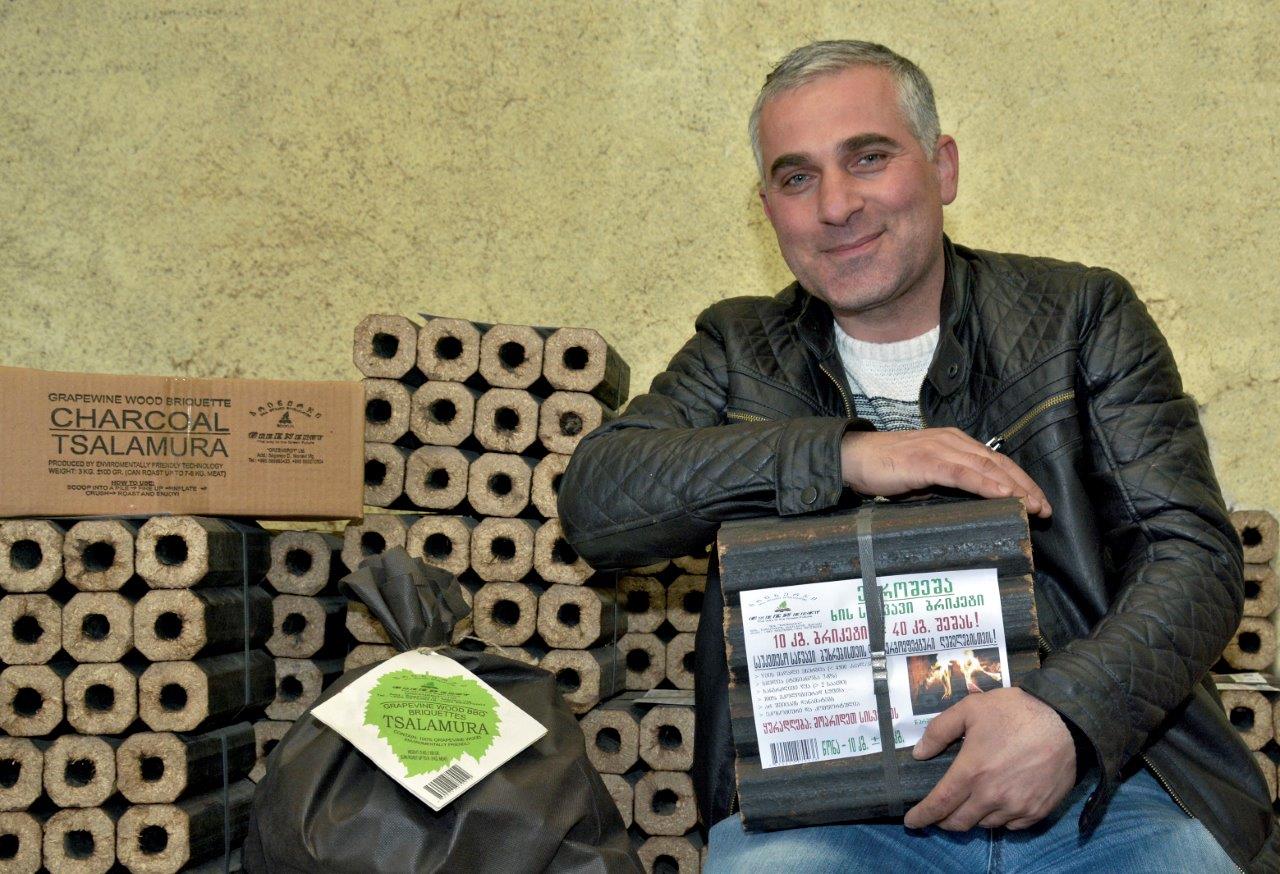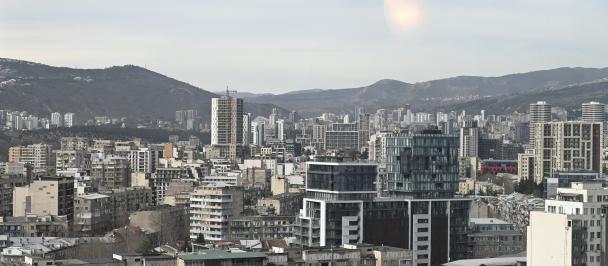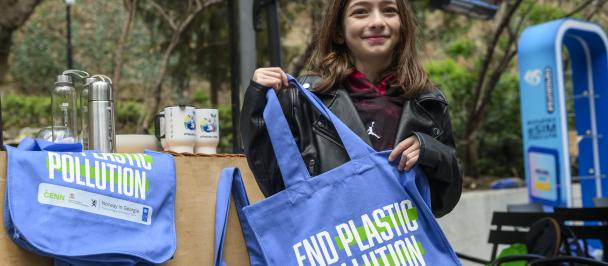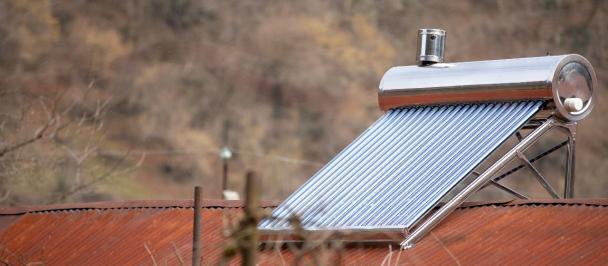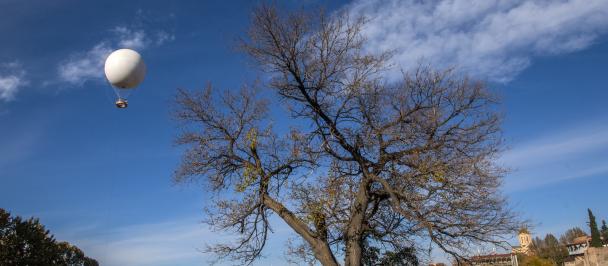Moving forward from small biomass plants to the national strategy on bio-energy
Biofuelling sustainable development in Georgia
July 11, 2018
Temur Matiashvili, a pioneer biomass producer in Georgia. Photo: Vladimer Valishvili/UNDP
Travelling to the region of Kakheti in east Georgia always brings winemaking to one’s mind. The region is famous for its vast vineyards and delicious traditional wines. Indeed, I was interested in vineyards when I visited Kakheti in December 2016, but not as a source of wine but rather a highest quality biomass material.
At a small biomass plant in the village of Manavi, I was impressed to see up-close how biofuels were produced. An untidy mass of vine shoots was sent through a briquetting device to be transformed into small neat blocks that can easily substitute to coal and other fossil fuels.
This small enterprise belongs to Temur Matiashvili and Giorgi Zurabishvili, the local residents who consider biomass production a promising business opportunity with environmental benefits.
Temur Matiashvili told me that replacing traditional firewood with biofuels was vital for saving Georgia’s forests. Most families in rural areas, as well schools and public offices, still rely on firewood for heating and, regrettably, get it from illegal logging.
Illegal logging was one of the reasons behind the increased deforestation in Georgia in the last 20 years.
Georgia is rich with hazelnut plantations in the west and vineyards in the eastern regions, which creates a natural supply of biomass material for local production.
Temur and Giorgi have made full use of this opportunity by setting up their biomass plant in the area surrounded by vineyards.
“We collect vine shoots from the neighbouring farmers, compress them into briquettes and sell to the local supermarkets and restaurants as a heating fuel and barbecue charcoal. Our production is good for environment and contributes to the local economy as it keeps money circulating locally,” Temur Matiashvili says.
Despite these obvious benefits, starting up a biomass plant was not all that easy. A couple of years ago, Temur and Giorgi struggled with outdated equipment and were on the verge of giving up on the biomass idea.
The assistance from the United Nations Development Programme (UNDP) and Global Environment Facility (GEF) came just in time to save and even expand their green business.
“With the new briquetting machine we are producing 75 tonnes of high quality briquettes per month,” Giorgi Zurabishvili says.
Even though biomass briquettes are a relatively new product in Georgia, Temur and Giorgi see good market prospects and hope to double production in 2017 turning their venture into a profitable business.
Since 2013, UNDP and GEF have been supporting three pilot biomass plants in different regions of Georgia aiming to show the benefits of biofuel, encourage local entrepreneurs and help the country put in place a national strategy and action plan on bioenergy.
700 tonnes of biomass briquettes were produced in Georgia in 2016 and these numbers can increase to up to 6,000 tonnes per year.
Biomass briquettes are becoming a best-selling product in the large supermarkets and will be used for heating schools and public buildings in some of the rural areas.
With the supportive policies in place and growing local production, Georgia has good chances in the coming years to power its municipal sector with renewable energy.
***
Read this story on Medium
About the author
Giovanna Christo is supporting the implementation of the project on “Promotion of Biomass Production and Utilization in Georgia” since September 2016. Environmental engineer by background, she has been working on climate change mitigation for the past 6 years, of which over 3 years have been in the field of sustainable energy.

 Locations
Locations